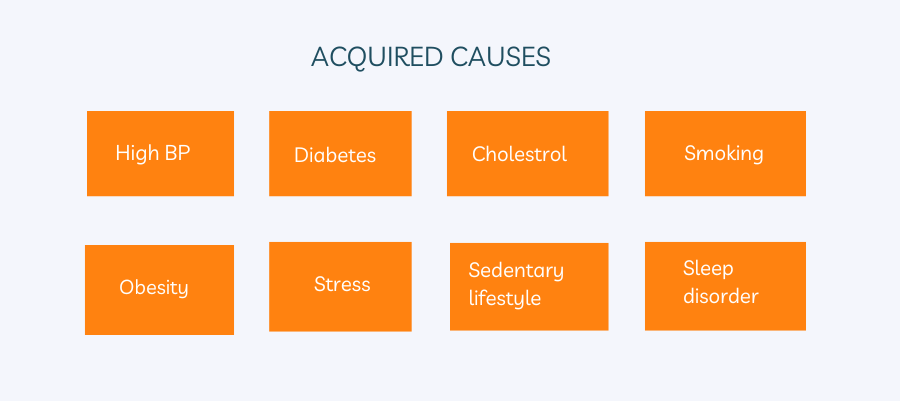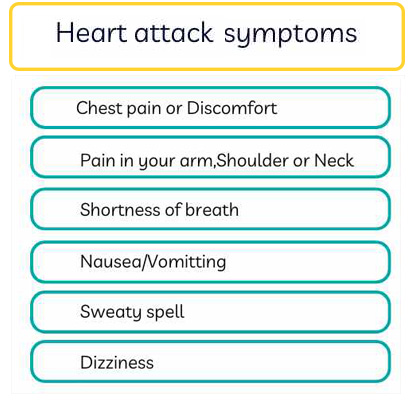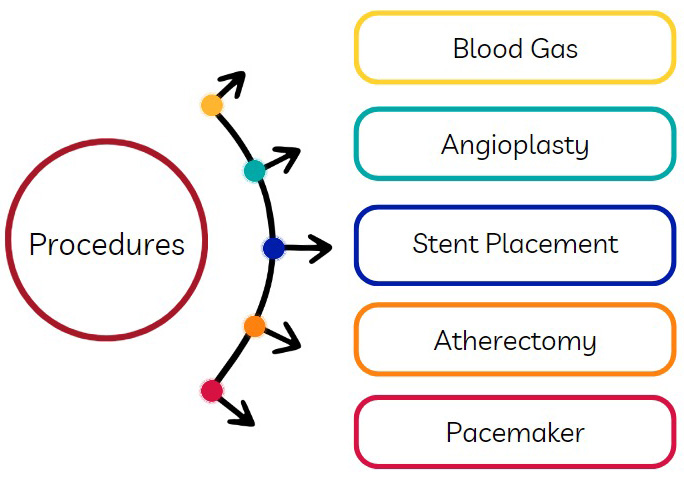.jpg)
Prevention Of Heart Attacks: Types and Causes
We all know heart attacks are prevalent, but how long have we known about them? I believe it's one of the oldest diseases. It has been well documented that 3,000 years ago, a Tamil Saint, Thiruvallur, documented a case of a heart attack in his work.
More recently, in February 2022, I read an article on baystatehealth.org. It was also featured in the Journal of the American College of Cardiology, which is the number one association of cardiologists in the world. According to the Journal, the first documented case of a heart attack was in an Egyptian princess who lived between 1580 to 1550 BC. It's fascinating how they documented it back then!
Causes of Heart Attack
There are two main categories of causes for heart attacks: hereditary and acquired. Hereditary causes are non-modifiable, meaning there's nothing you can do about them. Acquired causes are modifiable, meaning you can change your behavior to reduce your risk factors.
Hereditary Causes
Age: As we get older, our bodies deteriorate. While some people age better than others due to good behavior, everyone experiences some decline in health with age. This is why age 65 and above is considered a non-modifiable risk factor for heart disease.
Cholesterol: There are several kinds of cholesterol. Inherited low levels of HDL (good cholesterol) and inherited high levels of LDL (bad cholesterol) can increase your risk of heart attack.
Type 1 Diabetes: People with type 1 diabetes require insulin because their bodies don't produce enough. This can lead to early atherosclerosis, which increases the risk of heart disease.
Menopause: Women have higher estrogen levels than men, which protects them from heart disease. This is why women tend to develop heart disease about 10 years later than men.

Acquired Causes :
➤ High Blood Pressure
➤ Diabetes
➤ High Cholesterol
➤ Smoking
➤ Obesity (defined as 30% more than ideal body weight)
➤ Sedentary Lifestyle
➤ Sleep Disorders (e.g., sleep apnea)
Mechanism of a Heart Attack
A heart attack occurs when a coronary artery, which supplies blood to the heart muscle, becomes narrowed or blocked by a buildup of plaque (fatty deposits). This can cause chest pain, shortness of breath, and other symptoms.
Symptoms of a Heart Attack
➤ Chest pain or discomfort (the most common symptom)
➤ Shortness of breath
➤ Pain in the arm, shoulder, or neck
➤ Jaw pain (rare, but can occur)
➤ Nausea and vomiting
➤ Profuse Sweating
➤ Feeling lightheaded or dizzy
➤ Extreme fatigue

Important to Note:
Symptoms can differ between men and women. Women often experience more nausea, vomiting, and fatigue, and may delay seeking treatment because their symptoms are not as classically associated with heart attacks.
Silent Heart Attacks
About 30% of heart attacks have no apparent symptoms, especially in people with diabetes. This is because diabetes can damage the nerves, including those around the heart, which can numb the sensation of pain.
How to prevent Heart Attack
Since we now know the causes of heart attack, we can take steps to prevent them. Here are some key strategies:
❖ Maintain a Healthy Weight
❖ Eat a Healthy Diet
❖ Exercise Regularly
❖ Manage Stress
❖ Get Enough Sleep
❖ Don't Smoke
❖ Control Blood Pressure
❖ Manage Cholesterol Levels
❖ See your Doctor Regularly
❖ Treatment
If you suspect a heart attack, call emergency immediately. Don't drive yourself to the hospital. Here are some additional steps you can take while waiting for help.
Take a low-dose aspirin if you're not allergic.
If you have nitroglycerin prescribed by your doctor, take it under your tongue to minimize the damage of the heart attack.
Emergency Room Procedures
Now let's discuss what happens in the emergency room when you experience chest pain.
Initial Tests
Oxygen: They will likely administer oxygen to help you breathe better. Cardiac Monitoring: They will monitor your heart rhythm using an electrocardiogram (ECG).
Blood Work: Blood tests are done to check for troponin, a protein released by damaged heart muscle. Elevated troponin levels indicate a heart attack, even if symptoms are mild or atypical, especially in women.

Diagnosis and Treatment
1. Coronary Angiography: A thin tube (catheter) is inserted into an artery in your arm or leg and threaded to your heart. Dye is injected to visualize your coronary arteries on X-ray. This helps identify blockages.
2. Angioplasty and Stenting: If a blockage is found, a balloon is inflated within the artery to open it. A stent, a tiny mesh tube, may be placed to keep the artery open.
3. Atherectomy and Pacemaker: Atherectomy is a minimally invasive procedure used to remove plaque buildup from arteries, those supplying blood to the heart. Pacemaker is a small device implanted under the skin, usually near the collarbone, to regulate the heartbeat.
4. Bypass Surgery: In complex cases with multiple blockages, bypass surgery may be necessary. A healthy blood vessel from another part of your body is grafted to bypass the blocked coronary artery, restoring blood flow to the heart muscle
Recovery and Follow-up
Medications: You'll likely be prescribed medications to manage cholesterol, blood pressure, and prevent future heart attacks. These may include aspirin, beta-blockers, and other medications.
Cardiac Rehabilitation: f your heart muscle is damaged, cardiac rehabilitation can help you regain strength and improve your overall heart health through exercise and lifestyle modifications.
Follow-up Care: Regular doctor visits are crucial to monitor your condition and adjust medications as needed.
Lifestyle Changes
Maintain a Healthy Weight:Excess weight puts a strain on your heart.
Exercise Regularly: Aim for at least 30 minutes of moderate-intensity exercise most days of the week.
Manage Stress Chronic stress can worsen heart health. Find healthy ways to manage stress, such as yoga, meditation, or spending time in nature.
In conclusion, understanding and implementing preventive measures against heart attacks is crucial for maintaining heart health and overall well-being. By adopting a heart-healthy lifestyle, including regular exercise, a balanced diet, managing stress, avoiding tobacco, and monitoring blood pressure and cholesterol levels, individuals can significantly reduce their risk of experiencing a heart attack and eventually heart diseases.
Heart attacks are a major cause for death and know the ways to prevent the disease by watching this video. https://www.youtube.com/watch?v=vV4M2huiNaw&t=4023s